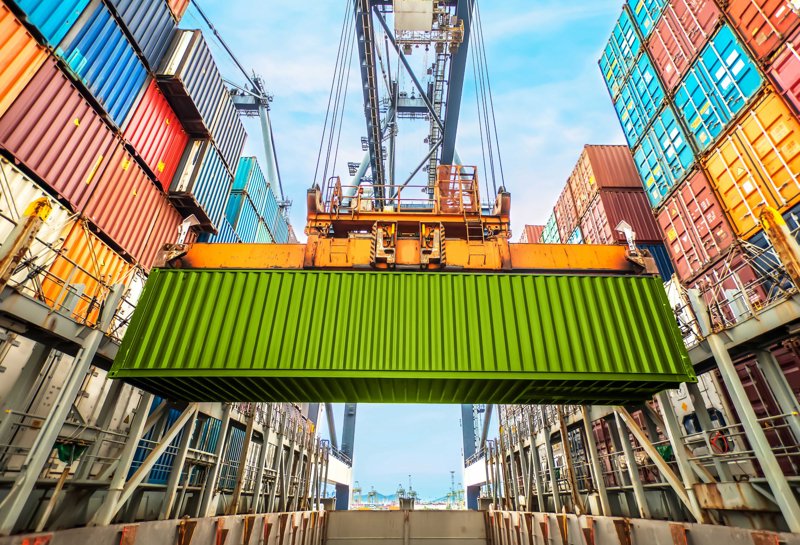COVID-19 disrupted the global supply chain, and these delays are likely here for the foreseeable future.
With the onset of the COVID-19 pandemic came global supply chain disruptions. The initial dip in demand for most commodities caused shippers to reduce their manufacturing capacity, let go of their workers and cancel ocean carrier and other freight transportation shipments. The summer of 2020 saw a growing shortage of workers coupled with a renewed surge in consumer demand for goods, a surge that hasn’t abated.
Today, the global supply chain still faces pandemic-related disruptions. The industry is still seeing shortages, delays, rising transportation costs, and higher product prices. But what will the future look like?
What’s behind supply chain delays?
The global supply chain is highly interdependent, so backlogs in one part of the world can set off ripple effects across the globe. For example, the Suez Canal blockage caused an increase in transportation costs from Asia to the Mediterranean and Europe and dashed hopes for a quick container turnaround. Hurricane Ida forced railroads to shut down, leading to service disruptions across the country, and Chinese officials closed the Yangtze River due to storms, causing widespread backlogs.

In the graphic above, you can see how these subtle changes in the global supply chain can have a drastic impact on when consumers receive their goods.
In addition to coronavirus restrictions and the continuing outbreaks around the world, worker shortages are also still causing significant container supply shortages, slowed port productivity and congestion at ports, warehouses and rail terminals. On the West Coast, fully loaded container ships are waiting at anchor, reducing the already limited supply of ships and shipping containers. Though the port congestion situation is getting better, businesses and consumers alike will experience worsening delays and increasing prices for some time. Despite the lack of available shipping containers, carriers are prioritizing the more profitable Asia-North America and Asia-Europe routes instead of returning to collect empty containers from Africa or South America. After all, China is responsible for manufacturing many goods and assembling components from other Asian countries before shipping them elsewhere. Plus, Chinese goods saw a spike in consumer demand during the pandemic.
The combination of container shortages and the high demand for imported goods means the increase of shipping prices. The cost of shipping from the West Coast to China had at one time doubled from pre-COVID levels, while the price of shipping a container from China to the West Coast had increased 13-fold.
While transporting goods via air rather than ocean may seem like a good alternative, airlines reduced their commercial flights during the pandemic, making finding belly capacity increasingly difficult. Plus, switching to air cargo is around eight times more expensive, so air cargo is not a realistic option for the 97 percent of US importers that are small and medium-sized businesses.
What’s next for the supply chain?
A single incident can impact the global supply chain, and everything from warehouse capacity to available shipping containers affects port congestion, delays, and costs. With the Delta variant, inclement weather, and upcoming West Coast labor negotiations, the rest of the year and the first few months of 2022 will likely be turbulent.
Prices will remain elevated until container circulation improves, port congestion clears, or consumer demand decreases. Even with the Biden Administration’s work to keep the port of Los Angeles open 24-7, backlogs still take time to unclog. Carriers are likely to continue delivering goods from China to Europe or the U.S. rather than returning to collect unprofitable shipments, so delays will probably continue well into 2022 — or even 2023, when new shipping vessels will be ready for deployment.
To prepare for future supply disruptions, shippers can begin incorporating alternative transportation modes into their network. Shippers should also pay attention to the spread of COVID-19 and use real-time tracking to anticipate wait times at ports so they can reroute their ships as needed.
Embracing digital supply chain solutions
While this past year has been challenging, there have been positive developments. The pandemic highlighted the need for digital technologies beyond simple transportation management systems. Companies are embracing AI, machine learning, and other new technologies to help them move their cargo more efficiently, but new tech isn’t the only game in town. Many shippers and other stakeholders who had resisted moving on from tracking cargo using spreadsheets have decided to embrace supply chain digitization. Digital solutions also create much-needed flexibility to react to changing conditions in real-time and avoid further shipping disruptions.
Digital supply chains also encourage sustainability by providing supply chain managers with centralized data. Managers can then ensure that their commitment to sustainability is being upheld throughout all parts of their supply chain, from their suppliers to their manufacturers.
Driven by its commitment to innovative technology and sustainability, Blume Global is the first carbon-neutral logistics provider with its own digital operating platform. The Blume Digital Operating Platform is a Google Cloud-native, flexible, real-time platform that offers end-to-end supply chain visibility and unrivaled logistics execution, allowing stakeholders to infuse agility, and complete transparency, into their supply chains.
contact us
Contact Us

